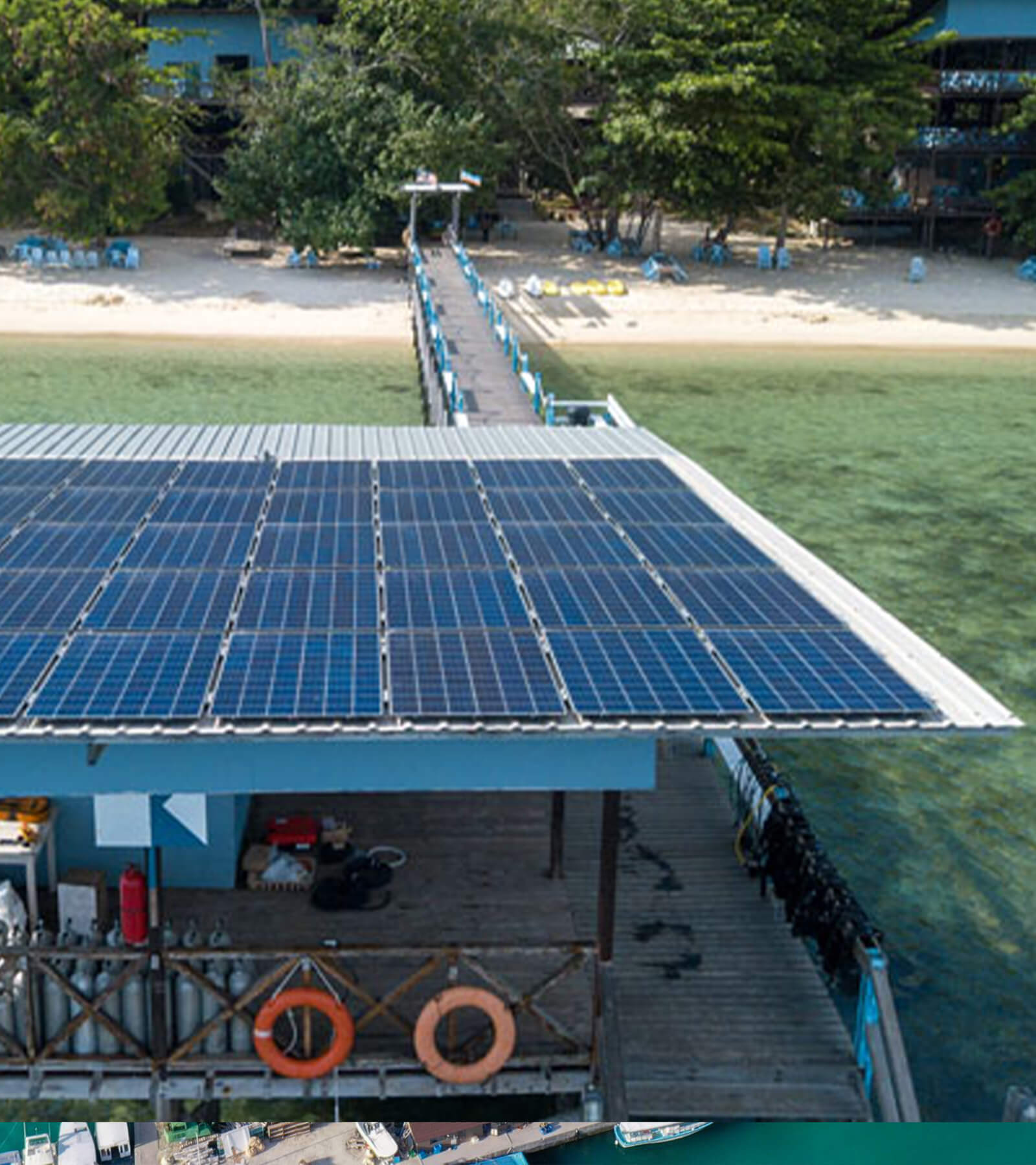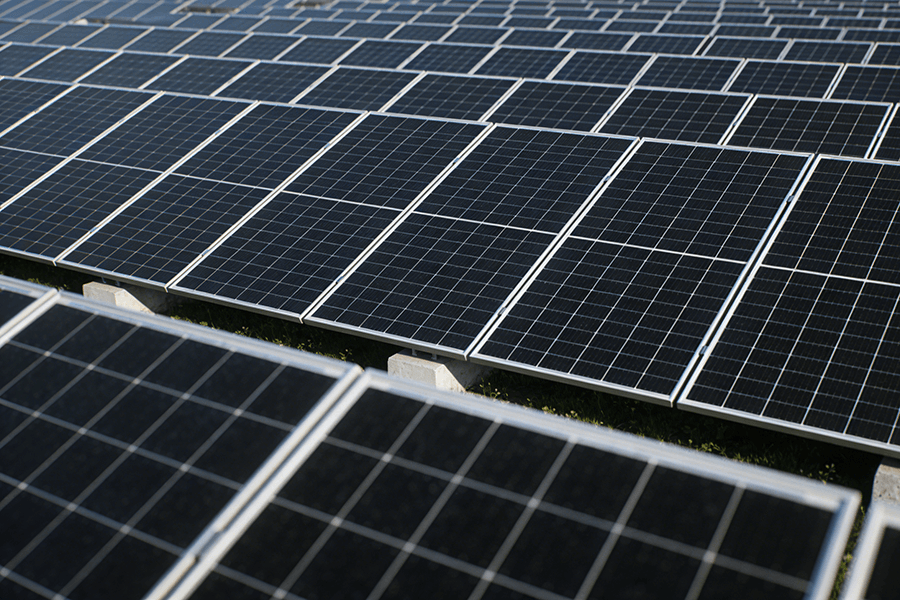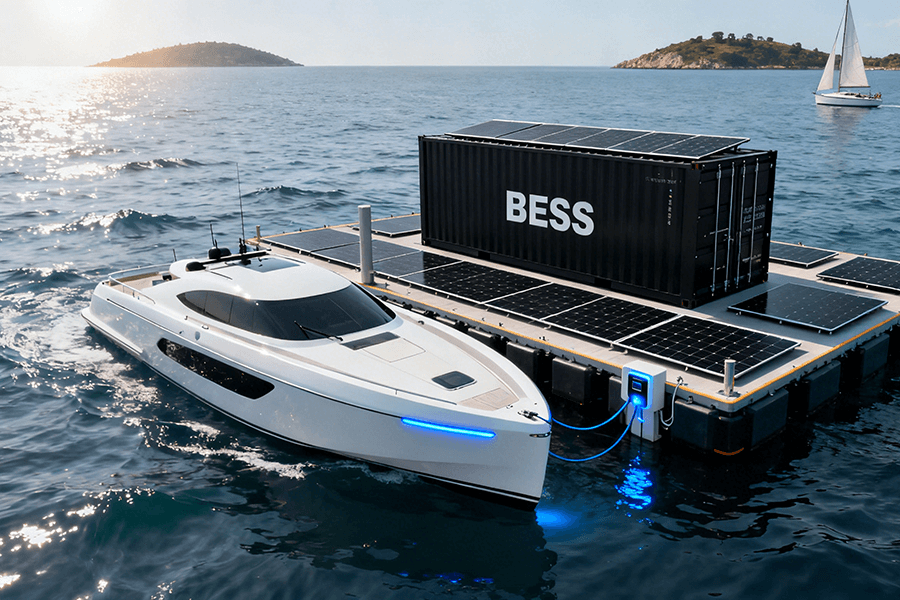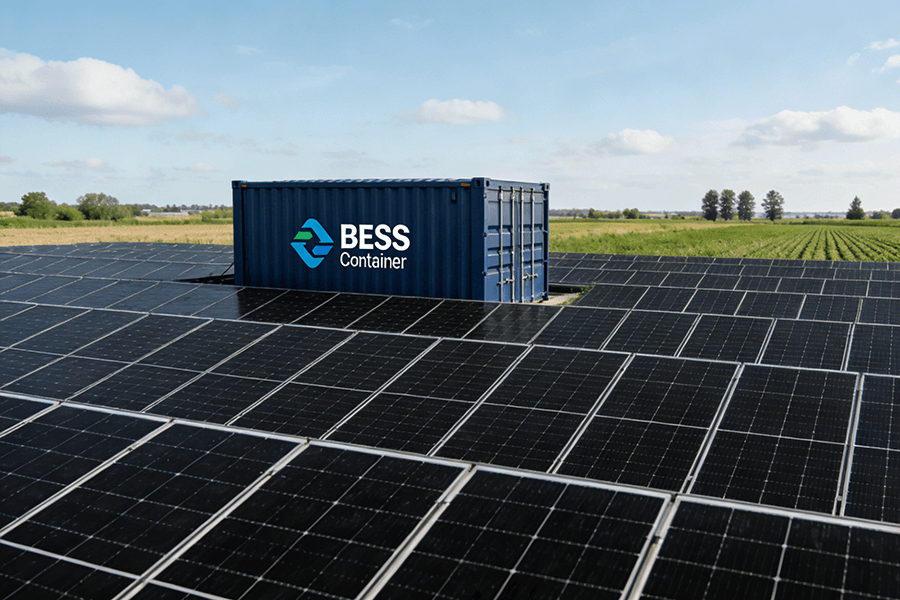
The IoT and Big Data Power Party in Storage
In 2025, the European energy storage sector has undergone a profound transformation, evolving from a niche domain into a vibrant technological frontier. The integration of the Internet of Things (IoT) and big data analytics has emerged as the cornerstone of this revolution, propelling the industry into a new era of efficiency and innovation.
IoT Sensors: The Eyes and Ears of Solar Farms
Solar farms across Europe are now equipped with a network of IoT sensors, functioning as intelligent data collection nodes. These sensors, strategically placed throughout the farms, continuously monitor a wide range of critical parameters:
| Parameter | Monitoring Function |
|---|---|
| Sunlight Angles | Tracks the position of the sun to optimize panel orientation for maximum sunlight absorption |
| Panel Temperatures | Monitors the temperature of solar panels to prevent overheating and ensure optimal performance |
| Battery Health | Assesses the state of charge, capacity, and overall health of energy storage systems |
Each sensor acts as a diligent sentinel, transmitting real-time data to a central analytics platform. This continuous stream of information forms the basis for advanced data analysis, enabling operators to make informed decisions and optimize the performance of their solar farms.
Big Data Analytics: Unleashing the Power of Data
The vast amount of data generated by IoT sensors is not just a collection of numbers; it’s a valuable resource waiting to be mined. Big data algorithms, powered by artificial intelligence and machine learning, play a crucial role in extracting actionable insights from this data deluge. These algorithms analyze historical and real-time data to identify patterns, trends, and correlations, enabling operators to:
- Optimize Panel Orientation: By analyzing sunlight angle data, algorithms can determine the optimal orientation of solar panels to maximize sunlight exposure throughout the day. This dynamic adjustment can significantly increase energy production.
- Manage Temperature Control: Monitoring panel temperature data allows operators to implement proactive cooling measures, preventing overheating and extending the lifespan of solar panels.
- Enhance Grid Integration: By analyzing energy production and consumption data, algorithms can optimize the integration of solar farms with the energy grid, ensuring a stable and reliable power supply.
Real-World Impact: Boosting Solar Utilization
The implementation of real-time analytics in European solar farms has yielded impressive results. Leading installations have reported a 15% increase in solar utilization, demonstrating the significant impact of data-driven optimization strategies. This improvement is equivalent to generating additional electricity from existing solar infrastructure, maximizing the return on investment for solar farm operators.
A 2024 study by the European Association for Storage of Energy (EASE) provides compelling evidence of the effectiveness of IoT-driven analytics in reducing energy curtailment. The study found that solar farms using data analytics reduced curtailment (wasted solar energy) by nearly a third, effectively converting unused sunlight into valuable electricity. This not only improves the economic viability of solar farms but also contributes to the overall sustainability of the energy sector.
In conclusion, the integration of IoT and big data analytics has revolutionized the European energy storage landscape, enabling solar farms to operate at peak efficiency and maximize their contribution to the clean energy transition. As technology continues to evolve, we can expect even greater advancements in data-driven optimization, further enhancing the performance and reliability of solar energy systems.
Core Analysis 1: Predictive Maintenance – The Crystal Ball for BESS Health
If BESS containers were cars, predictive maintenance would be the mechanic who texts you before your engine blows. But instead of guesswork, we’re talking data-driven precision—and the results are jaw-dropping.
The Technological Arsenal Behind Predictive Maintenance
Sensors embedded in BESS units function as an intricate nervous system, monitoring the system’s vital signs with remarkable accuracy:
- Battery Cell Voltage: Minute fluctuations in voltage can indicate impending cell degradation. High-precision sensors record voltage levels down to the millivolt, allowing for early detection of anomalies.
- Internal Temperature Fluctuations: Temperature is a critical factor affecting battery performance and lifespan. Advanced thermal sensors map out temperature gradients within the BESS container, flagging any hotspots that could lead to thermal runaway.
- Charge-Discharge Cycle Efficiency: By analyzing the efficiency of each charge-discharge cycle, operators can identify performance trends and predict when a battery is approaching the end of its useful life.
- Vibration Monitoring: Even the tiniest vibrations caused by loose connections or mechanical issues are detected. These subtle signs can be early indicators of potential failures and are crucial for preventive action.
The Power of AI in Predictive Analytics
Once the sensors collect this vast amount of data, advanced AI models take over. These models use machine learning algorithms to analyze historical and real-time data, identifying patterns and correlations that are impossible for human operators to detect. For example, they can analyze how changes in temperature, voltage, and vibration levels interact and predict when a component is likely to fail. This proactive approach enables operators to spot red flags weeks before a breakdown occurs, allowing for timely maintenance and preventing costly outages.
Real-World Impact: Case Studies and Statistics
The impact of data-driven predictive maintenance on BESS performance is evident in the numbers. According to a 2025 report from Germany’s Fraunhofer Institute for Solar Energy Systems, implementing predictive maintenance strategies has led to a staggering 90% reduction in unplanned downtime for BESS systems.
Case Study: A Dutch Solar Farm’s Success Story
A 50 MWh BESS at a Dutch solar farm serves as a prime example of the benefits of predictive maintenance. Before adopting these advanced tools, the solar farm faced monthly outages due to unexpected battery failures, with each incident costing approximately €30,000 in lost revenue and repair costs.
| Metric | Before Predictive Maintenance | After Predictive Maintenance |
|---|---|---|
| Monthly Outages | 1 | 0.08 (1 per year) |
| Annual Cost of Outages | €360,000 | €30,000 |
| Downtime Reduction | – | 90% |
After integrating predictive maintenance solutions, the frequency of outages dropped significantly, with only one outage occurring in an entire year. This transformation wasn’t the result of luck or magic—it was the direct outcome of data-driven decision-making, saving operators from costly midnight repair runs and ensuring the continuous, efficient operation of the solar farm.
Core Analysis 2: Revenue Stacking – Turning BESS into a Money-Making Multitasker
BESS containers used to be one-trick ponies: store excess solar, then feed it back when needed. Not anymore. Thanks to data analytics, they’re now juggling multiple revenue streams like a seasoned street performer—engaging in energy arbitrage, providing grid services, participating in capacity markets—and raking in €150/MWh or more in the process.
Let’s break down the key revenue-generating strategies enabled by data-driven optimization:
Energy Arbitrage
At the heart of energy arbitrage lies the strategic buying and selling of electricity based on price differentials. Advanced algorithms play a pivotal role here, meticulously analyzing historical price patterns and real-time market signals to identify optimal trading opportunities.
- Buying Low: When grids experience oversupply, typically during off-peak hours such as 3 AM when wind power generation surges, BESS containers step in to purchase electricity at lower prices.
- Selling High: Conversely, during periods of high demand, like weekday evenings when households and businesses consume more power, these stored electrons are sold back to the grid at a premium.
Market Impact: In 2025, the UK’s National Grid ESO reported that smart BESS operators earned up to €80/MWh just from energy arbitrage activities, highlighting the significant revenue potential of this strategy.
Grid Services
Grid stability is a constant challenge, especially with the increasing integration of intermittent renewable energy sources. BESS units are now crucial in maintaining grid reliability by providing essential services:
- Frequency Regulation: When there are sudden fluctuations in power generation, such as a drop in wind power, BESS containers can quickly inject or absorb electricity to stabilize the grid frequency.
- Voltage Support: Similarly, they help maintain optimal voltage levels, preventing power quality issues.
Data analytics is the linchpin in this operation. By analyzing a multitude of factors including weather forecasts, market prices, and grid stability metrics, operators can predict potential grid disturbances in advance. This foresight allows them to bid for grid services, adding an additional €70/MWh to their revenue stream.
Other Revenue Streams
Beyond energy arbitrage and grid services, BESS containers can also participate in capacity markets, where they are compensated for being available to supply power during peak demand periods. This diversification of revenue streams, all orchestrated by data-driven insights, transforms stored energy into a lucrative asset.
It’s truly a symphony of data: weather forecasts, market prices, grid stability metrics—all harmonizing to turn stored energy into cold, hard cash. The future of BESS container optimization is undoubtedly data-driven, opening up new possibilities for enhancing the performance of European solar farms and beyond.
Case Study: A 2025 French Solar Farm’s AI-Powered Success
Nestled in the sun-dappled fields of southern France, a 100 MWh Battery Energy Storage System (BESS) container at a 500 MW solar farm is revolutionizing the energy storage and management landscape. Managed by IBM’s cutting-edge Maximo AI, this sophisticated system transcends the traditional role of a mere storage unit, emerging as a highly intelligent, data-driven strategist with an uncanny ability to optimize operations and maximize profitability.
The Inner Workings of Maximo AI: A Deep Dive into Its Data-Driven Magic
Maximo AI’s prowess lies in its ability to harness an extensive and diverse array of data, creating what can be aptly described as a 24/7 data buffet. Here’s a detailed breakdown of its data ingestion and analysis processes:
- IoT Sensor Data: The system continuously ingests over 5,000 data points per minute from a network of IoT sensors strategically placed throughout the solar farm and BESS container. These sensors monitor critical parameters such as solar panel output, battery temperature, state of charge, and grid demand in real-time. This granular data provides a comprehensive view of the system’s operational status, enabling Maximo AI to make informed decisions.
- External Data Integration: To further enhance its decision-making capabilities, Maximo AI cross-references the IoT sensor data with external information sources. It integrates weather forecasts from Meteo France, allowing it to anticipate solar energy production based on weather conditions. Additionally, it pulls energy market prices from EPEX Spot, providing valuable insights into market dynamics and pricing trends.
- Optimized Scheduling: Armed with a wealth of data, Maximo AI employs advanced algorithms to generate optimized charging and discharging schedules. For example, it strategically schedules charging at 10 AM when solar energy production is at its peak, ensuring that excess energy is stored efficiently. Conversely, it discharges the BESS at 7 PM during peak demand hours, capitalizing on higher electricity prices and meeting grid requirements. Moreover, the system reserves 10% of its capacity for last-minute grid stabilization bids, providing essential flexibility and contributing to grid reliability.
Impressive Results: A Testament to the Power of Data-Driven Optimization
Since its deployment in January 2025, the solar farm’s BESS container managed by Maximo AI has delivered outstanding results, far exceeding expectations. Here are some key performance indicators that highlight the system’s effectiveness:
| Performance Metric | Pre-Maximo AI | Post-Maximo AI |
|---|---|---|
| Unplanned Downtime | Varies | 0% |
| Revenue Increase | N/A | 22% |
| BESS Lifespan Extension | N/A | Estimated 3 years |
The implementation of Maximo AI has led to a remarkable reduction in unplanned downtime, ensuring seamless energy production and grid supply. This achievement has not only enhanced the reliability of the solar farm but also minimized revenue losses stemming from system failures.
Revenue Growth through Stacked Services
- Optimized Scheduling: The system’s ability to fine-tune charging and discharging schedules, combined with its participation in grid stabilization services, has resulted in a 22% increase in revenue through stacked services.
- Market Diversification: By capitalizing on market opportunities and providing essential grid services, the solar farm has diversified its revenue streams, significantly boosting overall profitability.
Extended BESS Lifespan
Maximo AI’s intelligent management of the BESS container has extended its estimated lifespan by approximately 3 years. This is achieved through:
- Cycle Optimization: Efficiently managing charging and discharging cycles to reduce battery stress.
- Health Monitoring: Continuously tracking battery health to detect and address potential issues early.
- Proactive Maintenance: Implementing predictive maintenance strategies to minimize wear and tear, reducing the need for premature replacements and associated costs. These measures not only extend the operational life of the BESS but also enhance the long-term viability and sustainability of the solar farm.
Operator’s Perspective
As the farm’s operator aptly stated:
“Maximo AI doesn’t just manage our battery—it runs a mini energy business.”
This statement perfectly captures the transformative impact of data-driven optimization on the solar farm’s operations and financial performance. By leveraging artificial intelligence and data analytics, Maximo AI has elevated the BESS container from a basic storage device to a strategic asset, driving efficiency, profitability, and grid resilience.
Conclusion
The success of the 100 MWh BESS container at the 500 MW solar farm in southern France serves as a compelling case study for adopting data-driven optimization in the energy storage industry. As the demand for renewable energy surges and the need for efficient energy storage solutions becomes increasingly crucial, systems like Maximo AI offer a glimpse into the future of smart energy management. By harnessing the power of data and advanced analytics, these technologies have the potential to revolutionize energy storage, management, and distribution, paving the way for a more sustainable and resilient energy future.
Conclusion: Data Analytics – The ROI Multiplier for BESS
In conclusion, data-driven Battery Energy Storage System (BESS) optimization represents a transformative approach that transcends mere technological implementation. It is a strategic imperative aimed at propelling solar farms towards peak operational efficiency and profitability. By leveraging advanced analytics, solar farms can unlock remarkable performance improvements, such as extracting 15% more energy from each unit of solar irradiance, reducing system downtime by an impressive 90%, and achieving revenue streams of up to €150 per MWh. These statistics underscore the significant return on investment (ROI) potential that data analytics brings to the renewable energy sector.
Enter Maxbo Solar: Pioneering the Next Generation of Data-Driven Solutions
This is where Maxbo Solar steps onto the stage, poised to revolutionize the industry with our cutting-edge approach. At Maxbo Solar, we are committed to pushing the boundaries of what’s possible in BESS optimization. Our AI-powered platforms represent a paradigm shift, offering more than just data analysis—they provide predictive insights that empower solar farm operators to make informed decisions.
Our Multifaceted Approach
We employ a comprehensive methodology that integrates multiple data sources to develop highly targeted strategies for each BESS container:
- Satellite Weather Data: By leveraging high-resolution satellite imagery and weather forecasting models, we can anticipate solar irradiance patterns with remarkable accuracy. This enables us to optimize BESS charging and discharging cycles in alignment with expected solar energy generation.
- Grid Congestion Alerts: Real-time monitoring of grid conditions allows us to identify periods of congestion and adjust BESS operations accordingly. This not only helps to avoid curtailment but also enables participation in grid services, generating additional revenue streams.
- Battery Degradation Models: Our advanced algorithms continuously assess the health and performance of BESS batteries, predicting degradation patterns and optimizing usage to extend battery lifespan and maximize return on investment.
Tailored Solutions for Every Region
Whether you operate a solar farm in the sun-drenched plains of Spain or the more temperate climate of northern Germany, our solutions are designed to adapt to local conditions and optimize performance. We understand that each region presents unique challenges and opportunities, and our team of experts works closely with clients to develop customized strategies that deliver results.
Take the Next Step Towards Success
Are you ready to transform your BESS from a cost center into a profitable asset? Don’t miss out on the opportunity to harness the power of data-driven optimization. Visit us at www.maxbo-solar.com today and discover how Maxbo Solar can help you unlock the full potential of your solar farm. Let’s work together to create the next data success story in the renewable energy industry.












